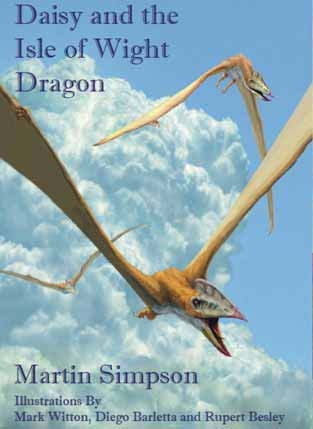Daisy and the Isle of Wight Dragon
In 2008 Daisy Morris, who at the time was just five years old but already an avid fossil hunter, found some small bones sticking out of rocks near Atherfield Point, just a stone's throw from Chale Bay Farm.
The bones were taken to Martin Simpson one of the leading fossil experts on the Isle of Wight who recognised their importance and took them to be studied at the University of Southampton.
Now after thorough checks it has been confirmed that Daisy has found a new species of pterosaur and the bones have been donated to the Natural History Museum and the species has been named after her: Vectidraco daisymorrisae.
Martin Simpson has written an amusing, illustrated, dramatised account for children which tells the real life story of the find called "Daisy and the Isle of Wight Dragon". The title is taken from the translation of the Latin name of the new pterosaur.

